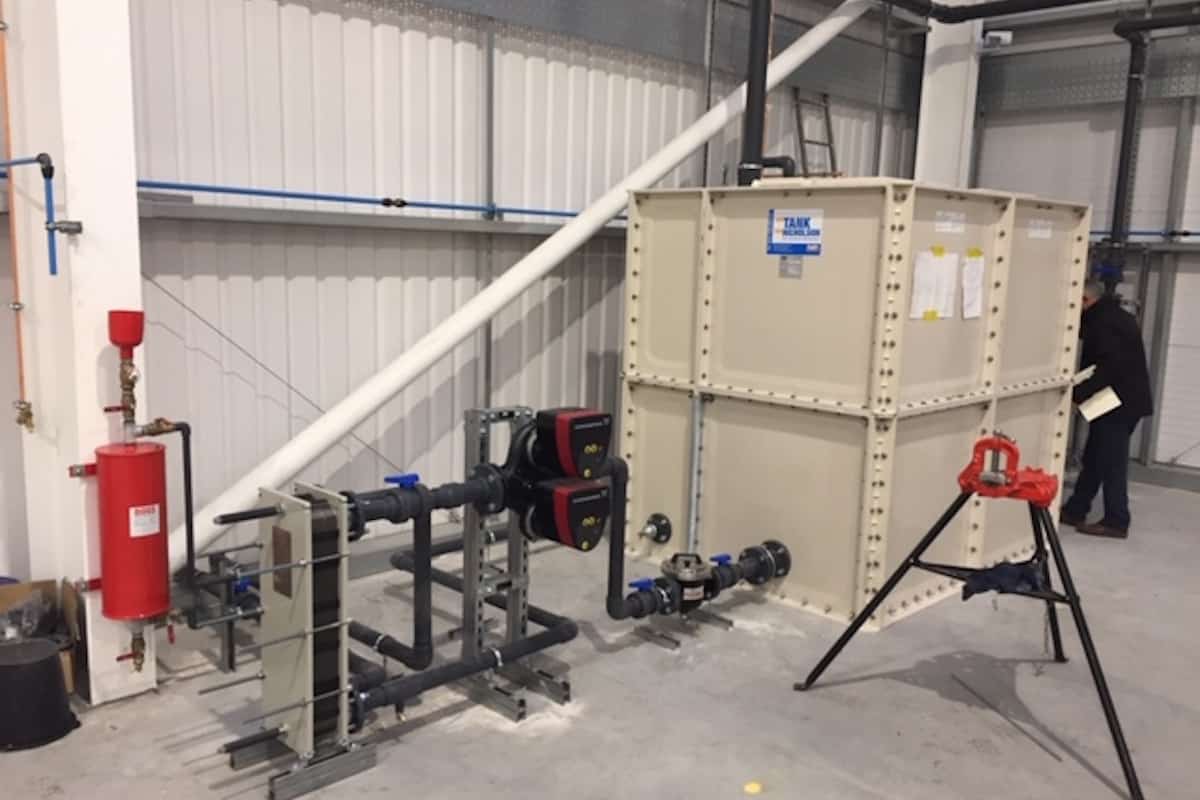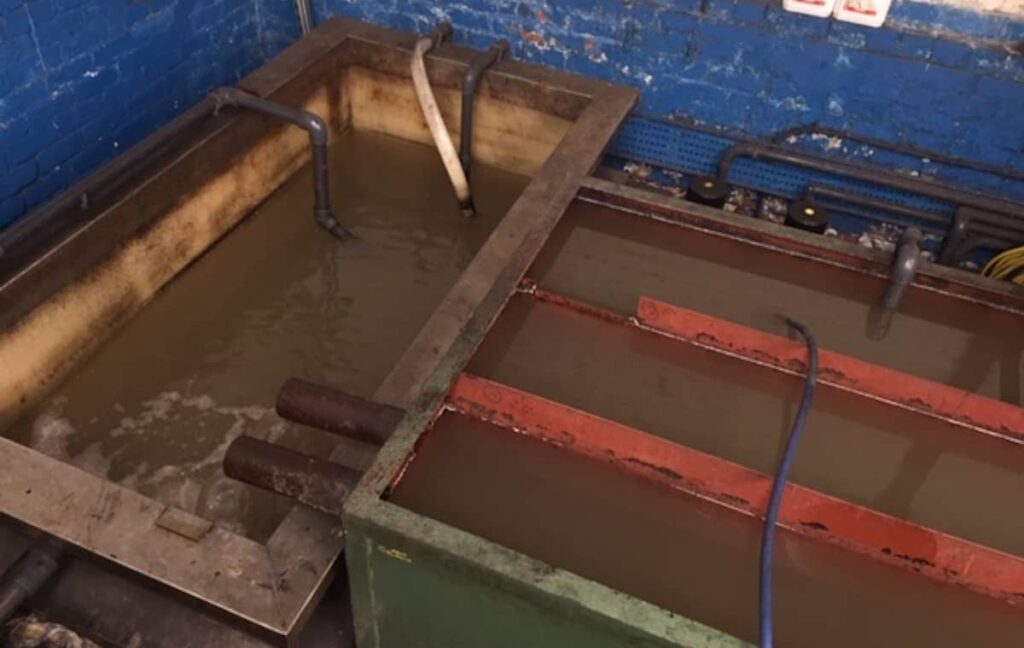
Designing and creating process cooling systems is an important part of the Kimpton business. It is the perfect example of why working in the plumbing industry, is nothing if it isn’t varied.
In this project, the small works team have been working with Hardy UK in Liverpool. They are one of those companies that if you do not work in their industry, you may never have heard of them, but to those in the know they are undoubted world leaders.
Established in 1854, Hardy UK make exceptional quality knife blades for the leather industry. They are rightly very proud of their 167-year history and their Liverpool roots. Their reputation worldwide is so strong, that 95% of their production is shipped worldwide from their Liverpool base.
Hardy were based in a factory that had evolved over many years and was full of equipment and processes that worked beautifully but due to their increased demand for more turnover & product stock. A new factory was the solution.
Our role was to investigate how the old process cooling worked and recreate the new system with a more efficient and cost-effective solution. Obviously, we were aiming to create a system that would potentially last another lifetime, be every bit as effective and be considerably cheaper to run. At the same time, we had to design & install a heating system to manage the working temperature inside the factory – always a challenge in the newer ‘shed’ type industrial units.
It is a solution that looks quite simple but does in fact take a lot of planning to make sure it works as well as it has done for the last 160+ years.
The production process in making knives produces an awful lot of heat that must be removed.
We installed two 40kW chiller units outside, one of which had been transferred from their head office in Sheffield. These feed cooling to the process water tank via their own independent plate heat exchangers.

In the old tank system, you can see here, the water follows a circuitous path around the tank, but this meant the waste would drop throughout the tank and the only way to clean it, was to drain the whole system.
You can see here that with the new tank system, the returning water is fed into one side of the tank, which is split into two sides and passes over a barrier in the centre. This is to allow any remaining metallic waste to fall to the bottom for easy collection and make cleaning and draining far, far easier than with the old system.
The cooled water is then pumped to the six machines used for the knife cutting process, before returning back to the new tank. From the tank, it is then pumped via an inline magnetic filter to remove the heat from the knife cutting process back through to the plate heat exchangers
The finished system is just going through final commissioning and we will have pictures of the completed work soon.
In the meantime, here are some pictures of the Kimpton team on-site, during the installation process.
If you would like to discuss any of our services, please call 0151 343 1963 or complete the form below and we will be in touch shortly.